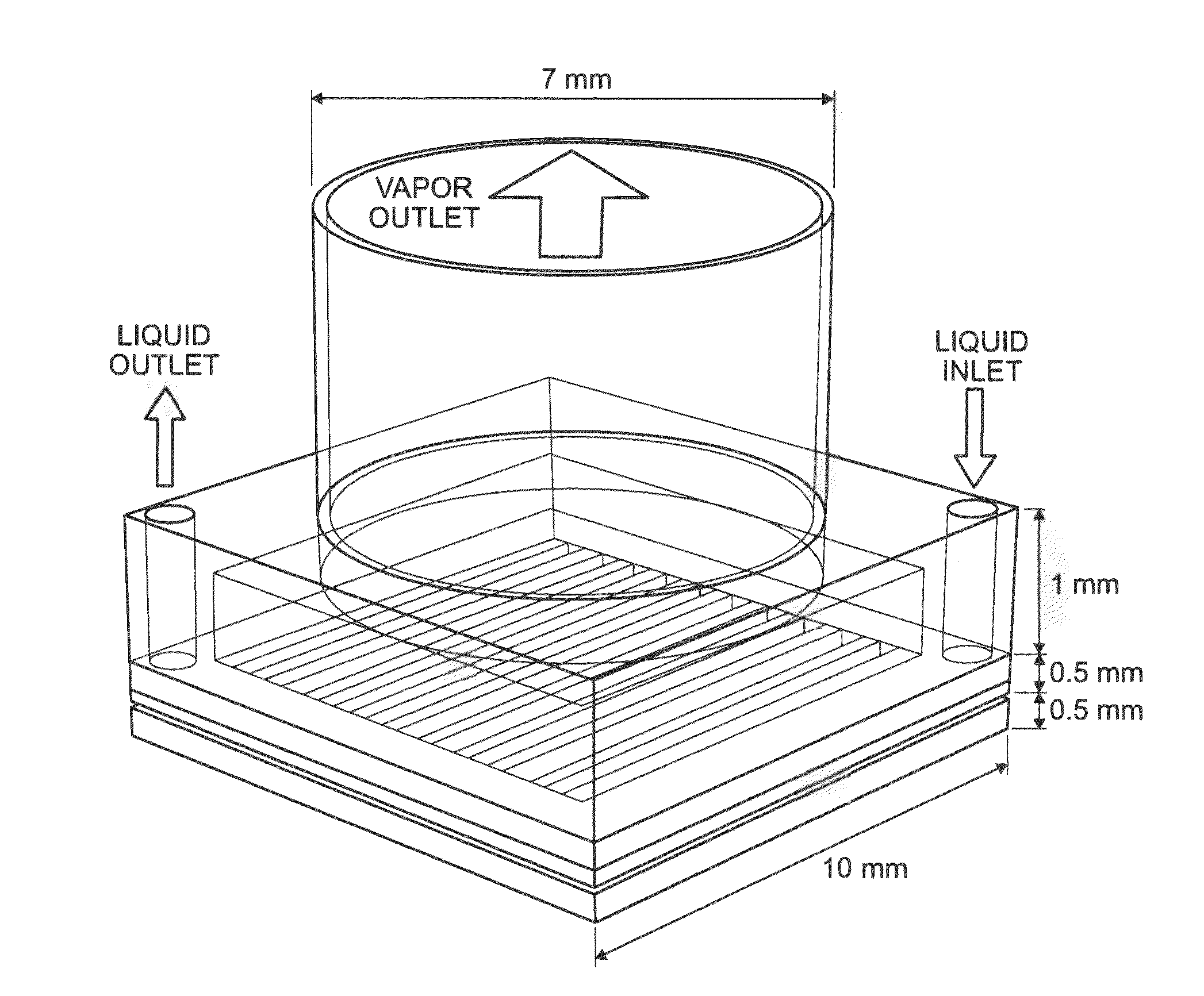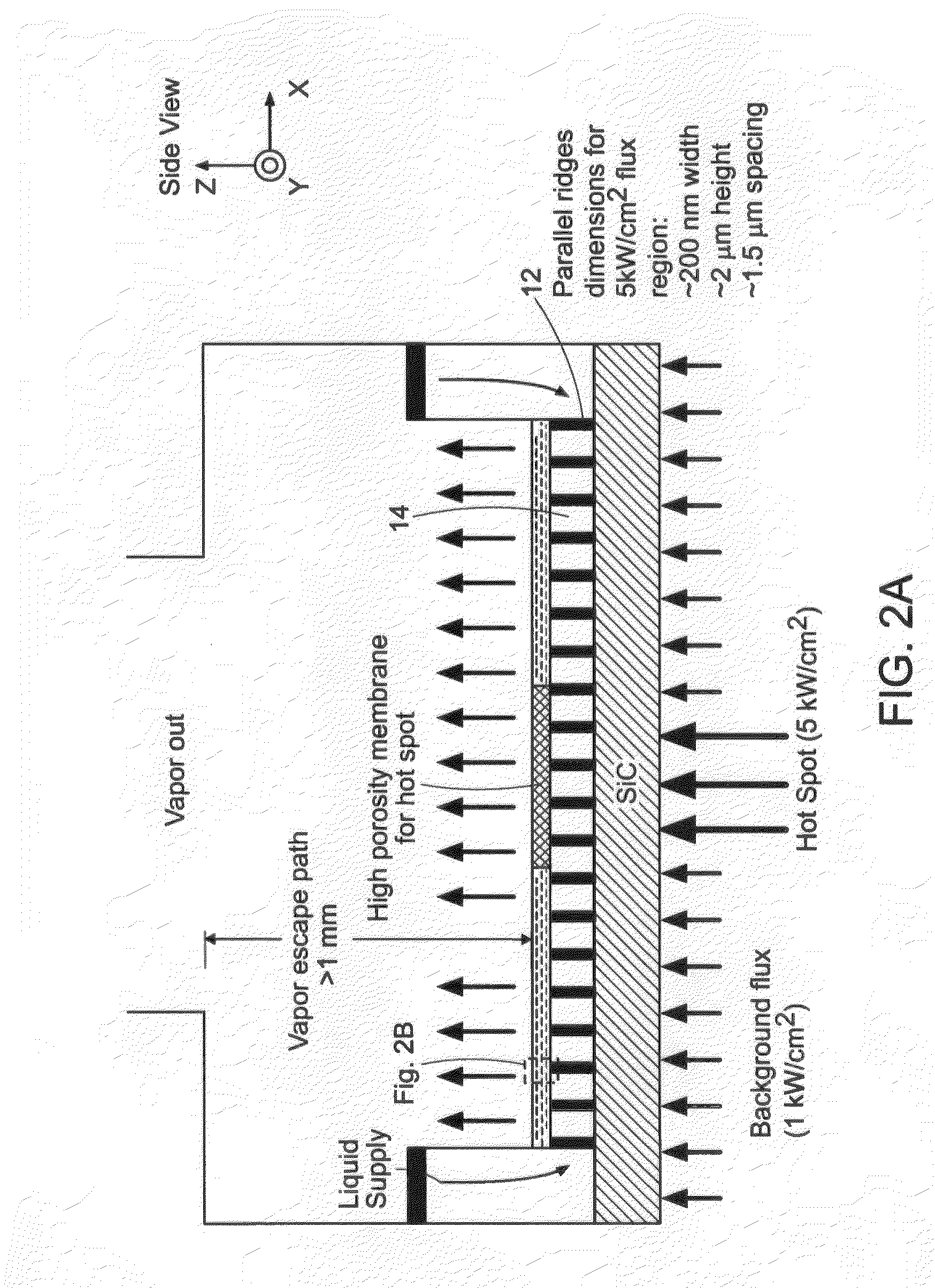Evaporative Heat Transfer System
a heat transfer system and evaporative technology, applied in the field of heat transfer, can solve the problems of fundamental limitations in performance of such wicks, and inability to achieve significant increases in pumping power requirements, so as to achieve high capillary pressure and dissipate heat flux through the substrate
- Summary
- Abstract
- Description
- Claims
- Application Information
AI Technical Summary
Benefits of technology
Problems solved by technology
Method used
Image
Examples
Embodiment Construction
[0029]We disclose a unique intrachip two-phase evaporative cooling solution capable of dissipating >1 kW / cm2 for a 1 cm2 chip area with a local 200×200 μm2 hot spot >5 kW / cm2 (FIG. 1). A mechanical pump delivers a dielectric fluid, such as pentane, across microchannels whereby liquid is drawn in through the vertical liquid manifolds towards the heated surface via capillarity using a thin nanoporous membrane. The membrane provides an important functionality to the approach and allows the delivery of the necessary flow rates to dissipate the requisite heat fluxes. Subsequently, the vapor generated by evaporation exits through the backside and is guided to an external condenser where the liquid is recirculated back to the pump. A detailed design of the proposed concept is shown in FIG. 2, which has several important innovations.
[0030]A nanoporous membrane 10 is supported by parallel ridges 12 forming vertical channels 14 therebetween. Liquid is supplied through liquid supply lines 16. ...
PUM
 Login to View More
Login to View More Abstract
Description
Claims
Application Information
 Login to View More
Login to View More - R&D
- Intellectual Property
- Life Sciences
- Materials
- Tech Scout
- Unparalleled Data Quality
- Higher Quality Content
- 60% Fewer Hallucinations
Browse by: Latest US Patents, China's latest patents, Technical Efficacy Thesaurus, Application Domain, Technology Topic, Popular Technical Reports.
© 2025 PatSnap. All rights reserved.Legal|Privacy policy|Modern Slavery Act Transparency Statement|Sitemap|About US| Contact US: help@patsnap.com



